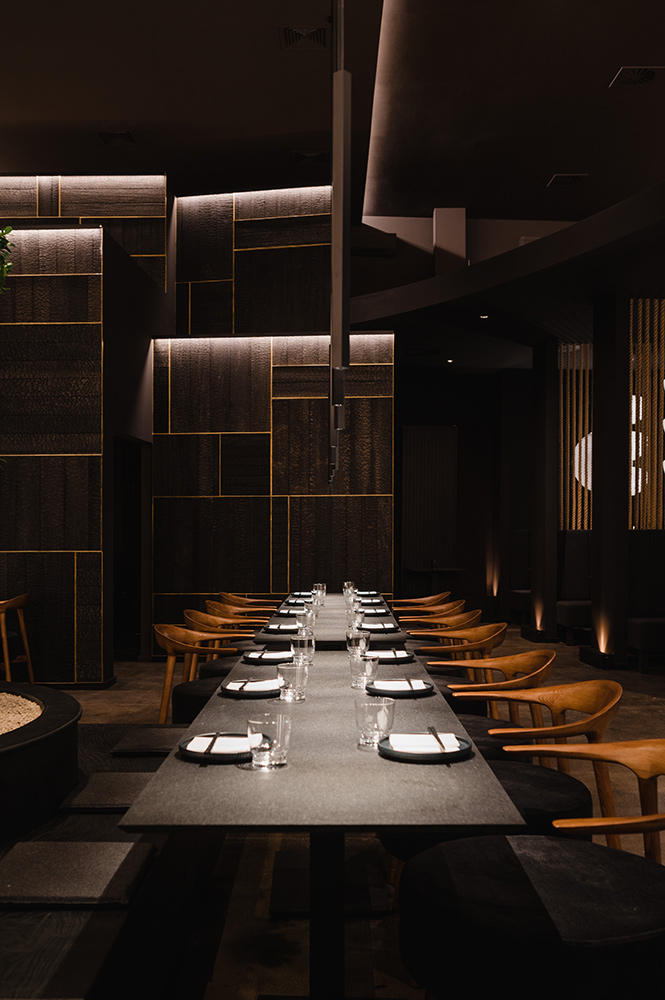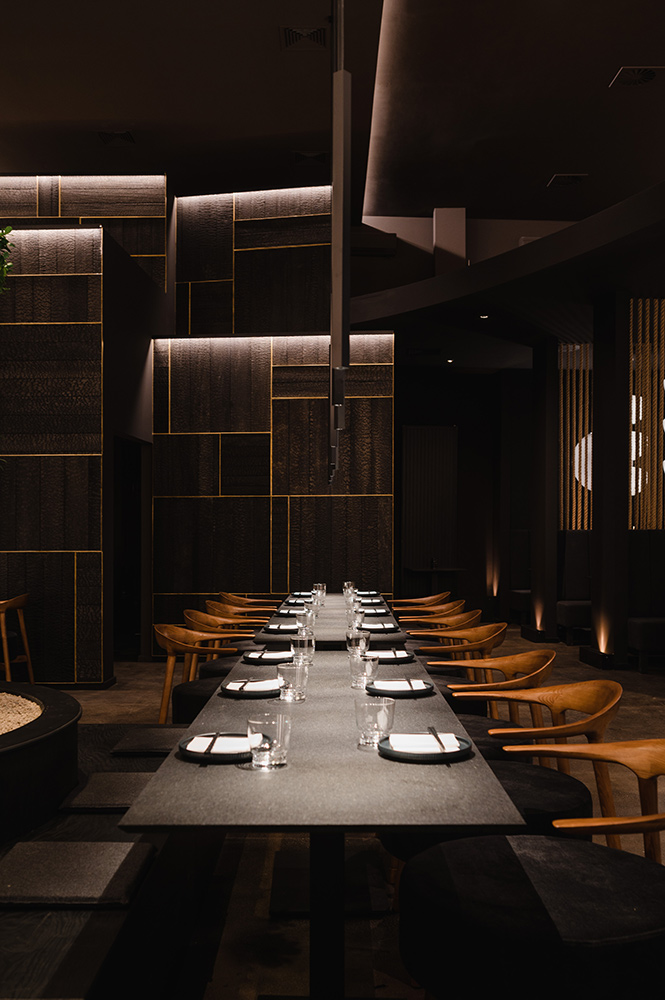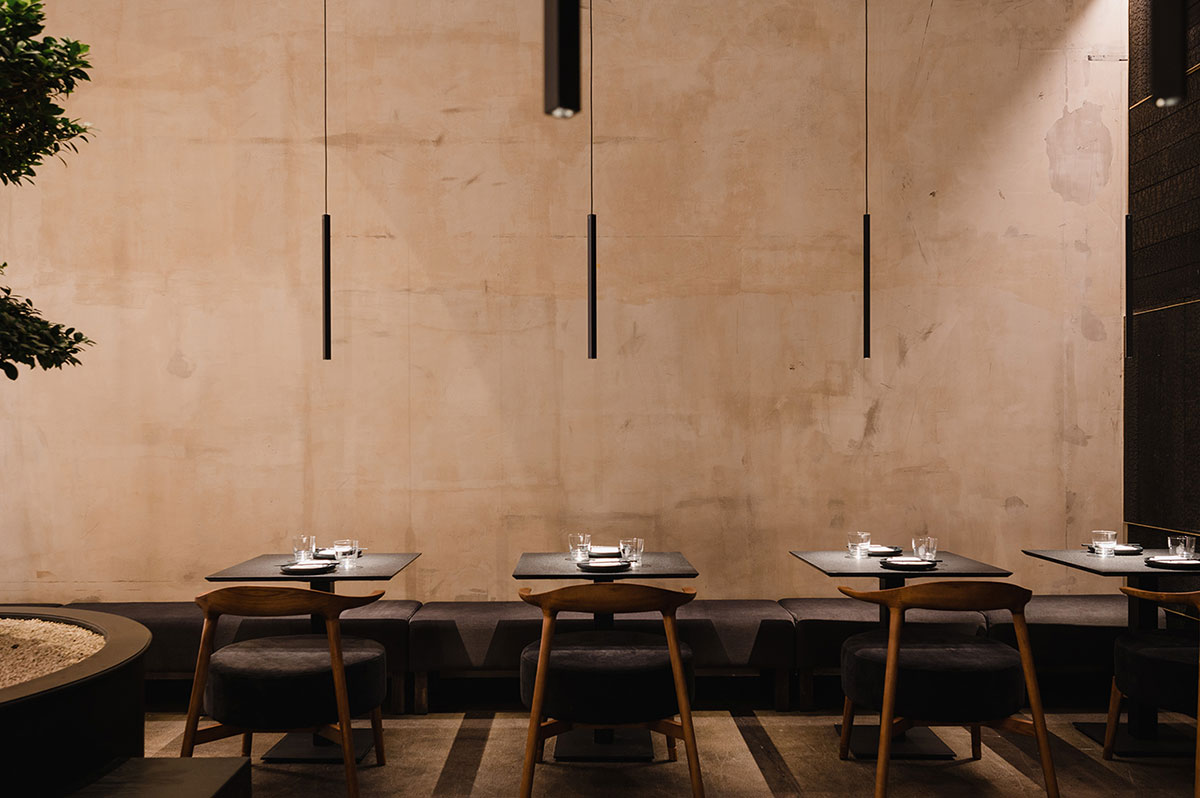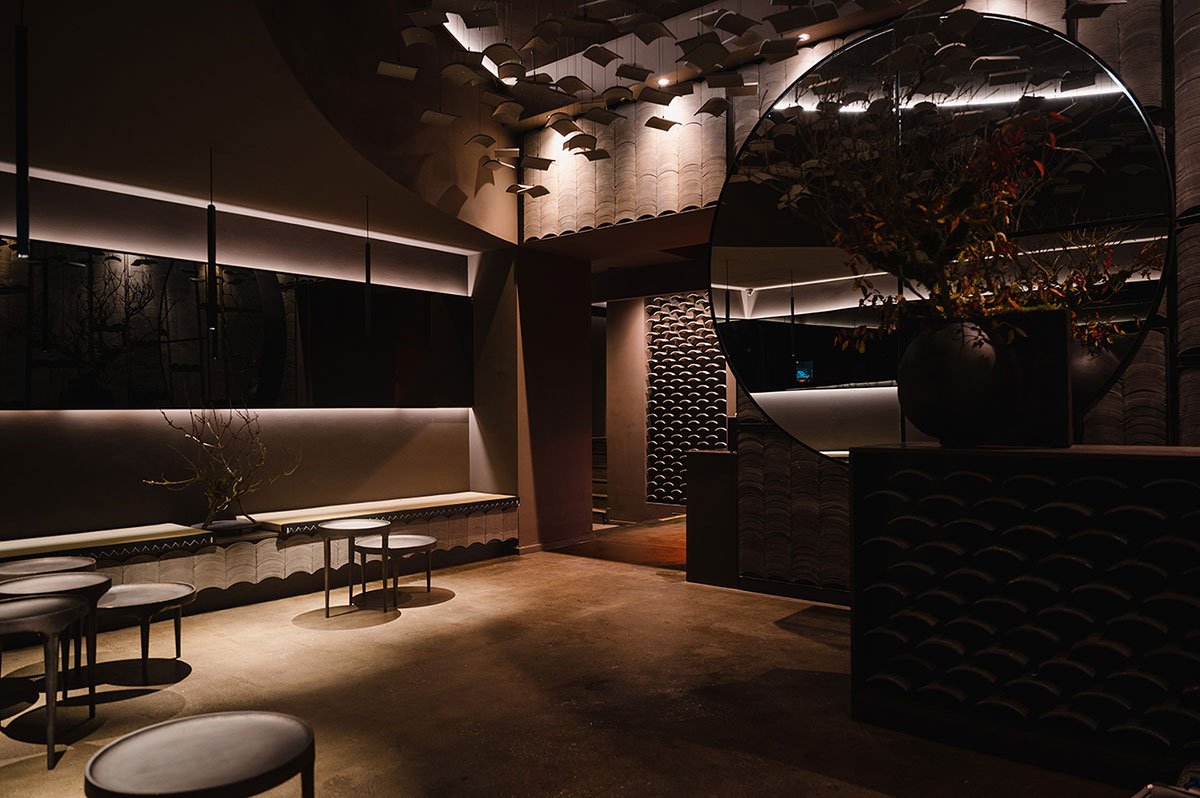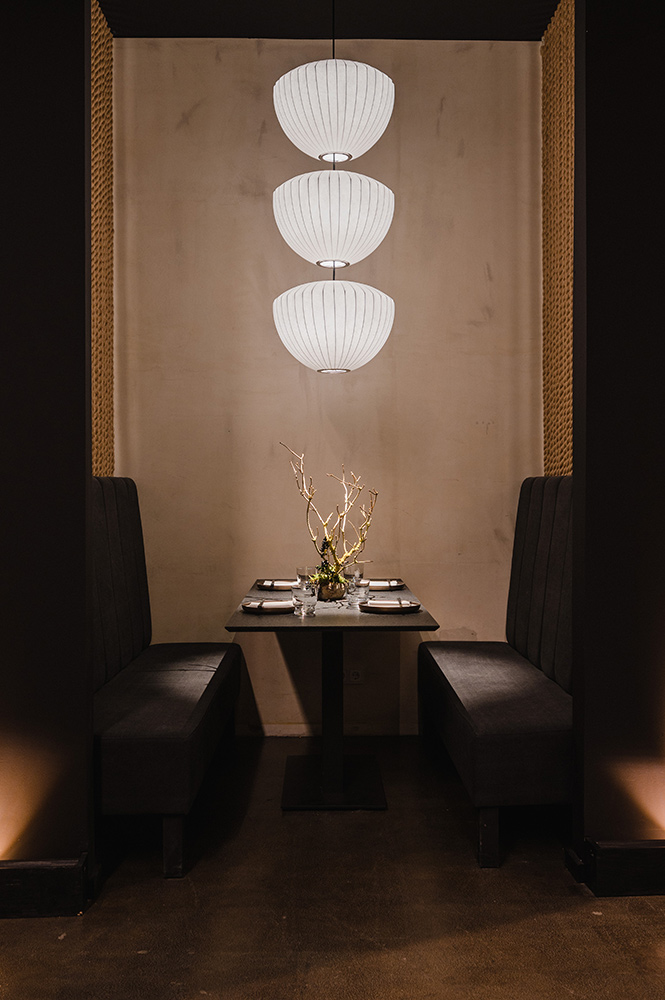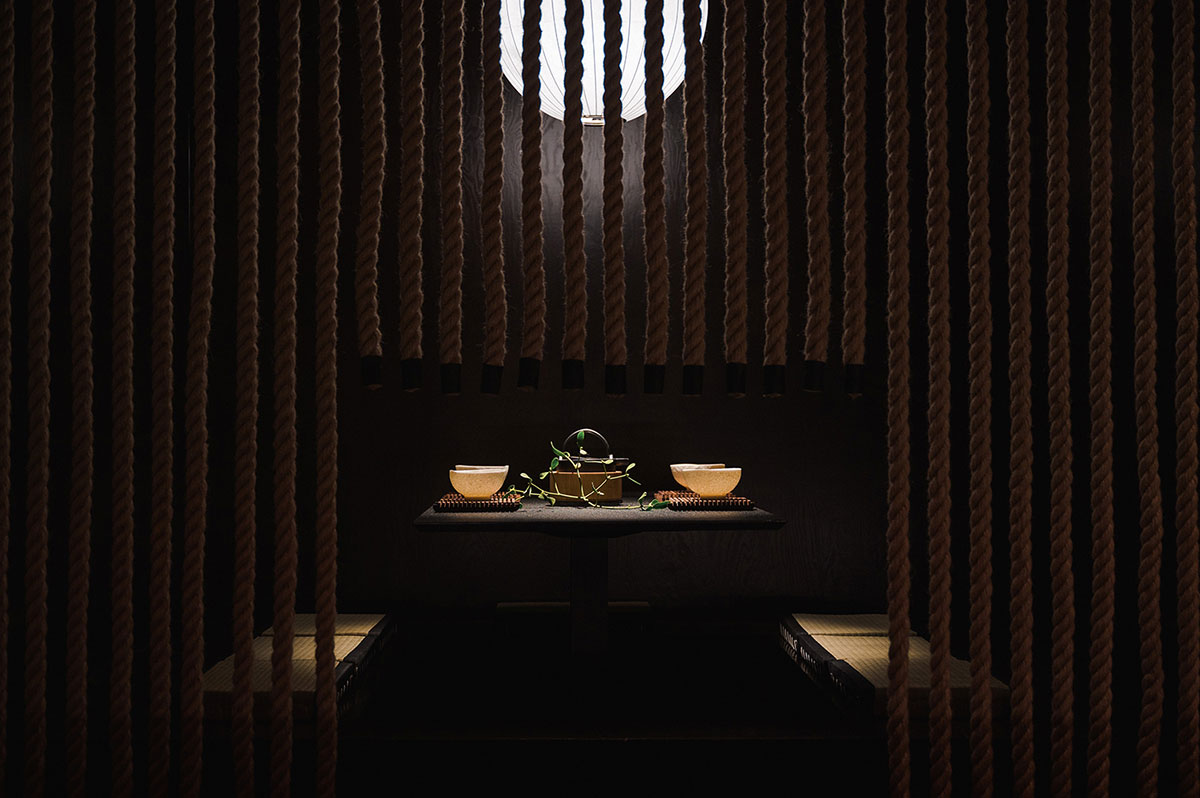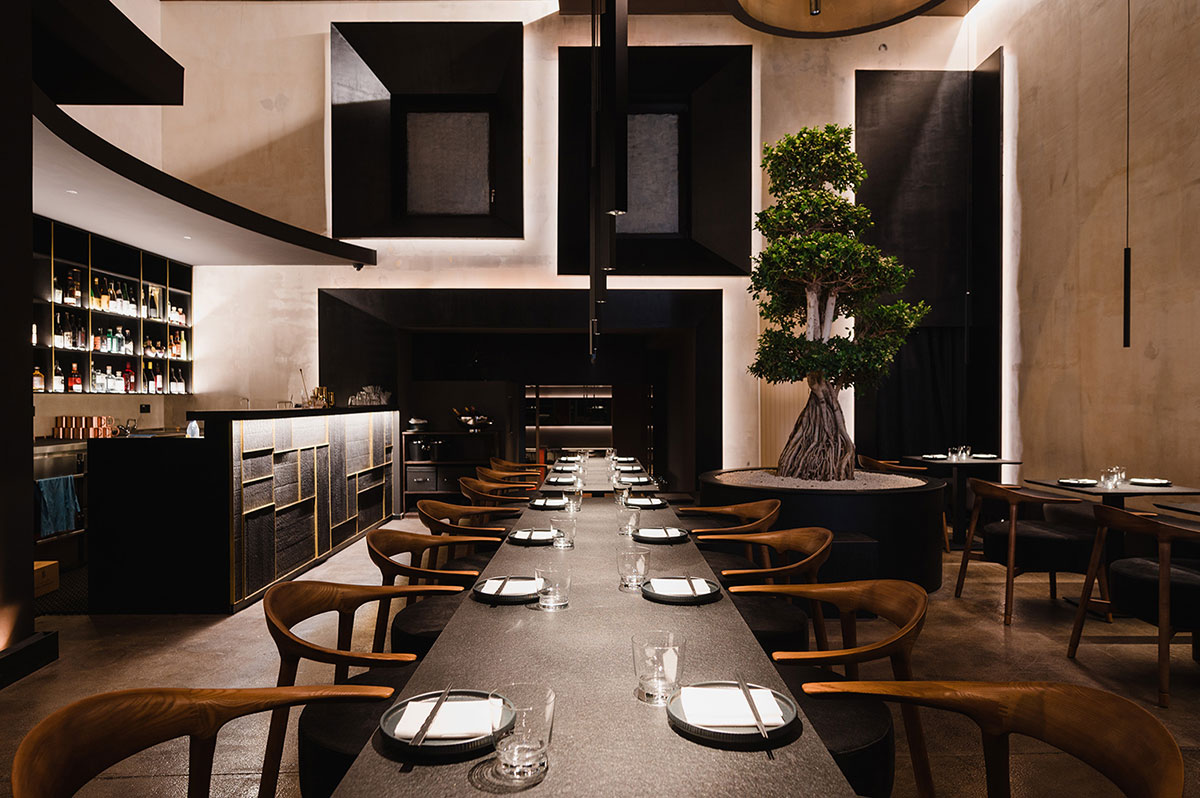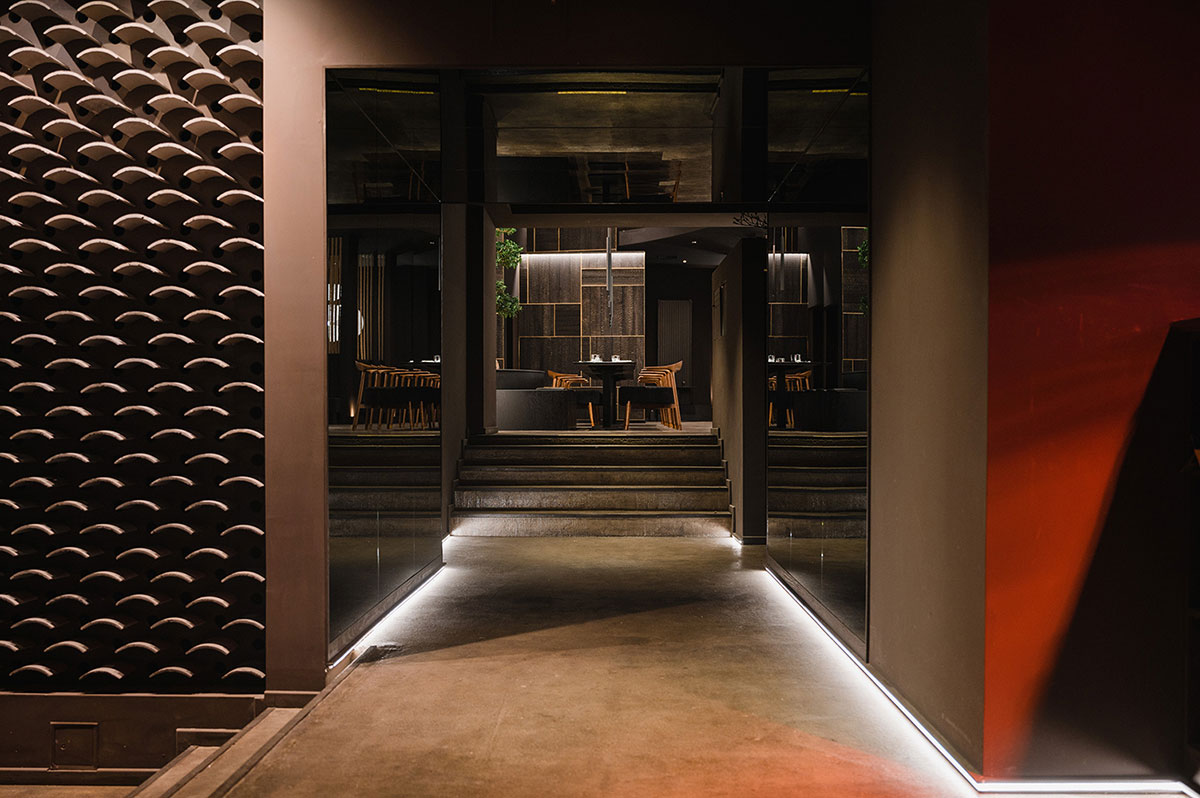Architect / Designer:
Studio:
Design Team:
Copyright:
Country:
The building consists, typically like a “Berlin room”, of a front building that connects the rear building with the side wing. There is a tea house in the front building. The rear building leads to the dining restaurant.
By dividing the area into two units of use, the task was to perceptibly transform the rear building, into a new place of peace and attentiveness.
Through a small entrance in the backyard, one enters the Fine Dining, which presents itself in various shades of black, particularly minimalist and straightforward, but also haptically exciting. Wabi-Sabi – an aesthetic concept closely linked to Zen Buddhism, which deals with the simplicity and imperfection of things – also flowed into the design.
After entering the red lacquered door in the backyard, guests are first escorted through a mirrored corridor to the lounge.
According to the Zen philosophy, the mirrors are meant to help guests reflect on themselves. These mirror elements are found again in the lounge. In addition, Japanese roof tiles were installed on the ceiling, hovering above the heads of the visitors like a kind of symbolic protection. Thick cords serve as room dividers and tatami mats as seating.
All those who would like to enjoy the restaurant experience with relaxing background music in the main room walk past the rest area.
The large dining room features black walls of burnt Japanese wood geometrically interspersed with golden joints, a floor of screed and epoxy resin, tables made of flamed granite and chairs and other furniture specially made for Oukan. The centrepiece is a beautiful and around three-metre-high bonsai-ficus, which radiates a very special calm.
One challenge was to create a place of calm and mindfulness. Warm light, wood, glass and stone create different structures. These structures can be discovered and felt everywhere – on the walls, on the tables and on the tableware.
The other challenge was to recreate a sense of calm in the heterogeneous floor plan, consisting of different room widths, heights and levels, and to guide the guests from the street, through the backyard to the dining room.
In doing so, we used different methods of perception.
The red-painted door leads guests from the street across the courtyard to the main entrance of the restaurant. Entering the entrance, one stands in a flat, narrow anteroom that merges into a high, completely mirrored room. The mirror elements repeat in three rhythms up to the large hall.
Passing through both rooms, one reaches the lounge. The lounge serves as a welcome space and ensures that guests briefly come to themselves and escorted as a complete group into the main hall.
Once in the dining room, a sacred-like space awaits.
The room is perceived as a place of tranquillity thanks to the minimalist elements and dark, warm colours. Only an ancient bonsai tree symbolises time and radiates calm and dignity.
With targeted lighting, the dishes on the plates are perfectly illuminated and the room is kept in dimmed light.
Nakuo Design
Nakuo Design is a small interior design and food concept studio based in Berlin.
Nakuo’s projects are high quality, inspiring, sure of success, expressive and sustainable.
The constant source of inspiration is the attention to detail and sustainability and the pursuit of new concepts.
We guide your work from food concept to lighting concept to restaurant.
We place great emphasis on interdisciplinary collaboration and a systematic design process.
Our design appeals to the senses of the users, promotes social interaction and thus improves the understanding of the environment.


